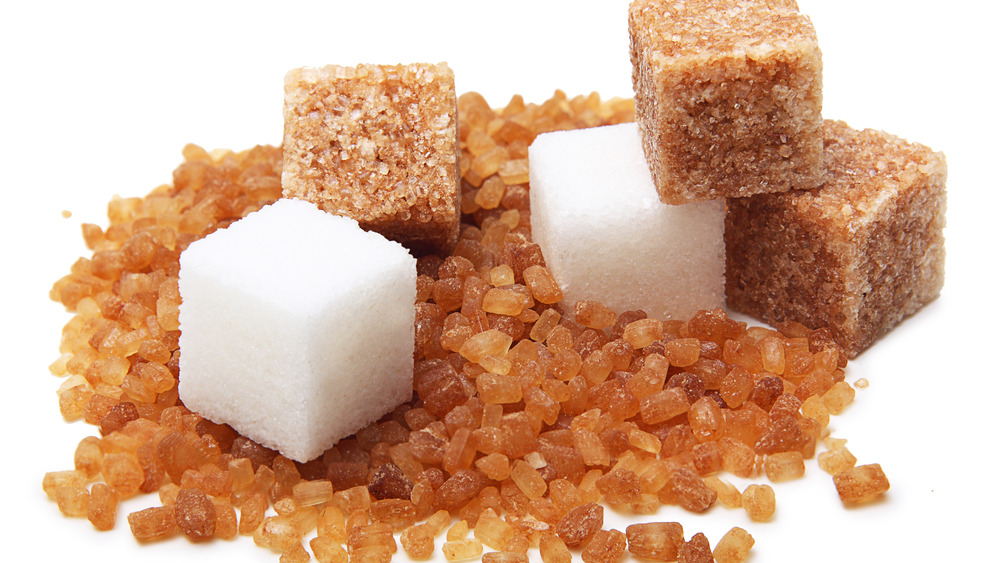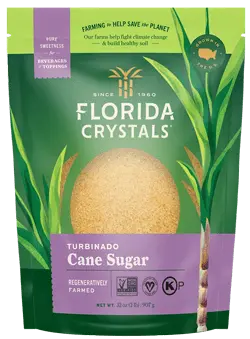Cane Sugar Processing Explained: What Occurs Inside a Sugar Mill
Cane Sugar Processing Explained: What Occurs Inside a Sugar Mill
Blog Article
Understanding the Essential Methods and Technologies Utilized in Modern Walking Stick Sugar Processing
The advancement of walking cane sugar processing has actually been substantially shaped by the integration of advanced techniques and technologies that resolve both performance and sustainability. As we check out these important advancements, it ends up being crucial to analyze just how they not only enhance manufacturing but likewise align with wider market fads and consumer demands, raising questions concerning the future of sugar processing and its effects for international markets.
Historical Context of Walking Cane Sugar Processing
The historical context of walking cane sugar handling discloses an abundant tapestry of agricultural technology and cultural exchange that has actually formed its growth over centuries. Coming From Southeast Asia, sugarcane was cultivated as early as 8000 BCE - Cane Sugar Processing. The procedure of drawing out and refining sugar acquired energy in India, where approaches for crystallization were improved around the 6th century. This understanding traversed to the Middle East, and by the 12th century, sugar became a valued product in Europe, resulting in the facility of sugar vineyards in the Mediterranean.

Advanced Extraction Strategies
Performance in walking cane sugar removal has actually seen substantial advancements, driven by the demand for greater yields and reduced manufacturing expenses. Conventional methods have actually evolved, offering method to innovative modern technologies that enhance the efficacy of the removal process. One significant improvement is the use of enzyme-assisted extraction, wherein specific enzymes damage down cell walls and release more sucrose from the cane fibers. This technique not only enhances sugar yield but also minimizes the power required for processing.
Additionally, the fostering of membrane filtering innovations, such as nanofiltration and turn around osmosis, has changed the splitting up of sugar from contaminations. These methods enable the careful permeation of sugar molecules while preserving larger contaminants, simplifying the extraction procedure and reducing waste.
In addition, the assimilation of constant removal systems has actually brought about improved functional effectiveness. Cane Sugar Processing. These systems maintain a continuous flow of walking stick material, making certain optimum extraction conditions and lowering downtime connected with batch handling
Ingenious Refining Technologies
Refining methods in walking stick sugar processing have undertaken a transformative change, driven by the need for greater purity and boosted product high quality. One of one of the most notable technologies is the adoption of membrane layer filtering innovations, such as ultrafiltration and nanofiltration. These processes successfully remove contaminations and colorants without the need for extensive chemical therapies, thereby maintaining the sugar's natural taste and improving its appeal.
Another significant advancement is using ion exchange resins, which permit for careful elimination of undesirable ions from sugar services. This innovation not just increases the total purity of the final product but likewise adds to lowered waste and ecological impact.
In addition, improvements in adsorption methods, using activated carbon and other sophisticated materials, have actually shown reliable in decolorizing sugar solutions while keeping optimal top quality. The assimilation of these cutting-edge refining modern technologies makes sure that makers can create refined sugar with remarkable clarity and taste, satisfying the advancing choices of customers.
Automation and Control Systems
Recent advancements in refining innovations have led the way for substantial renovations in automation and control systems within cane sugar handling facilities. These systems use advanced software and hardware to improve operational efficiency, reduce human error, and guarantee constant item high quality.
Modern automation incorporates various parts, consisting of sensing units, actuators, and programmable reasoning controllers (PLCs), allowing real-time surveillance and control of vital processes. As an example, temperature level, flow, and stress rates can be precisely managed during removal, clarification, and crystallization stages, maximizing efficiency and reducing waste.
Additionally, progressed data analytics and device learning formulas play a crucial role in predictive upkeep, allowing drivers to anticipate tools failings before they happen. This positive method not just decreases downtime but likewise prolongs the life-span of machinery.
On top of that, automation assists in the implementation of Sector 4.0 principles, equipping sugar mills to attain greater connectivity and go to my site information exchange throughout procedures. Therefore, decision-making ends up being even more active and enlightened, eventually enhancing the total competitiveness of walking stick sugar manufacturing. With these innovations, the market is well-positioned to fulfill expanding worldwide needs while keeping functional quality.
Sustainability Practices in Sugar Production
Sustainability methods in sugar manufacturing have actually ended up being significantly necessary as the market seeks to stabilize financial stability with environmental responsibility. As customer awareness expands concerning the environmental impacts of farming techniques, sugar manufacturers are embracing cutting-edge methods to minimize their eco-friendly impact.
One substantial technique is the implementation of accuracy agriculture strategies, which make use of data analytics to maximize source use, such as water and plant foods. This minimizes waste and minimizes the effect on regional ecological communities. Moreover, numerous producers are transitioning to renewable resource sources, such as biomass from sugarcane by-products, to power their procedures, consequently decreasing reliance on fossil gas.
Water management methods are additionally important; rainwater harvesting and effective irrigation systems help alleviate water deficiency concerns. Cane Sugar Processing. Additionally, incorporated pest monitoring methods minimize chemical use, promoting biodiversity and dirt wellness
Business social get more responsibility campaigns are emerging, with business spending in regional neighborhoods and making certain reasonable labor practices. By accepting these sustainability techniques, the sugar sector not only improves its track record yet additionally contributes to a more sustainable agricultural landscape, leading the way for future generations.

Verdict
In summary, contemporary cane sugar handling incorporates a variety of advanced techniques and modern technologies that significantly boost yield, sustainability, and effectiveness. The adoption of cutting-edge extraction and refining methods, alongside automation and control systems, assists in improved functional efficiency and product quality. Furthermore, the emphasis on sustainable practices underscores a commitment to minimizing environmental effect and advertising moral manufacturing. Collectively, these developments position the walking stick sugar market to meet contemporary demands while dealing with vital worldwide difficulties.
The development of walking stick sugar handling has actually been considerably formed by the assimilation of advanced techniques and innovations that resolve both performance and sustainability.The historical context of cane sugar handling reveals an abundant tapestry of farming technology and cultural exchange that has actually formed its advancement over centuries. Developments in milling and refining arised, laying the groundwork for modern walking cane sugar handling.Refining strategies in walking cane sugar processing have gone through a transformative change, driven by the demand for greater pureness and enhanced item high quality.In summary, click resources modern-day walking cane sugar processing includes an array of sophisticated techniques and innovations that significantly enhance yield, effectiveness, and sustainability.
Report this page